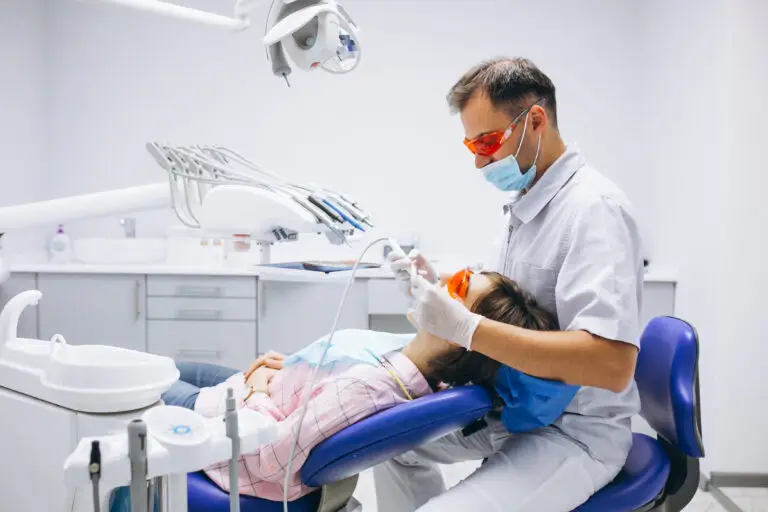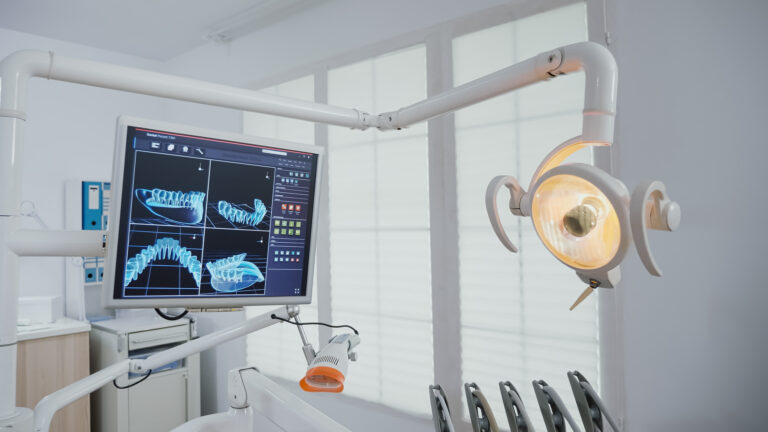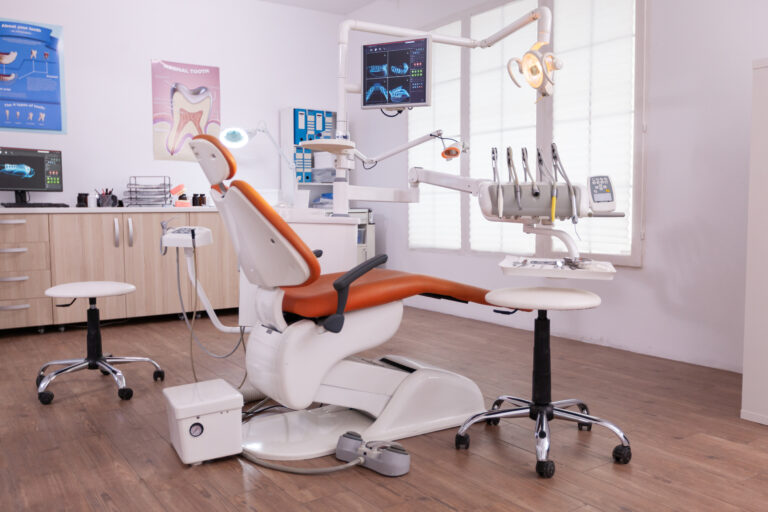How to List Your Medical Supplies on B2B Marketplaces
Table of Contents
Introduction:
Selling medical supplies in India is no longer limited to field sales or distributor networks.
In today’s digital-first economy, B2B marketplaces have emerged as a powerful sales channel connecting suppliers directly with clinics, hospitals, and diagnostic labs across the country.
If you’re a supplier of surgical gloves, dental tools, diagnostic kits, or other medical consumables, getting listed on a B2B marketplace can instantly boost your reach and credibility.
Moreover, platforms like IndiaMART, Medikabazaar, and TradeIndia allow MSMEs to digitize their product catalog, receive direct inquiries, and compete alongside larger players.
But simply signing up isn’t enough.
To truly succeed, you need to understand the right way to list, present, and promote your medical supplies for the best visibility and conversions.
This guide offers a simple, step-by-step breakdown for small businesses, manufacturers, or wholesale distributors looking to tap into the growing digital procurement trend in healthcare. Let’s dive in.
1. What Are the Best B2B Marketplaces in India for Selling Medical Supplies?
When it comes to selling medical supplies online in India, choosing the right B2B marketplace is crucial.
Each platform caters to different buyer segments, hospitals, pharmacies, diagnostic labs, and clinics, and offers varied tools for visibility, order management, and lead generation.
Here are the top-performing B2B platforms for medical suppliers:
Marketplace | Best For | Key Features |
IndiaMART | General medical and surgical suppliers | High buyer traffic, verified leads, customizable storefront, chat integrations |
TradeIndia | All healthcare equipment and diagnostic items | Catalog listing, enquiry management tools, and business analytics |
Medikabazaar | Niche healthcare-focused procurement | Dedicated to hospitals and clinics, logistics integration, and demand forecasting |
Moglix Healthcare | Institutional medical procurement | High-volume bulk orders, order tracking, and financing options |
HospKart | Surgical and OT consumables | Product bundling, hospital-specific ordering system |
Amazon Business | Retail and MSME sellers with PAN and GST | Easy listing process, brand visibility, and integrated payments/logistics |
Each of these B2B marketplaces offers different advantages depending on your supply volume, target customer base, and pricing strategy.
For small and medium businesses, platforms like IndiaMART and Medikabazaar are excellent starting points, especially due to their established presence in the Indian medical supplies ecosystem.
2. How Do I Create a Seller Account and Upload My Product Catalog on B2B Medical Portals?
For first-time digital users, listing medical supplies on B2B marketplaces may seem overwhelming, but the process is actually simple if broken down into clear steps.
Whether you’re selling gloves, syringes, diagnostic tools, or surgical kits, getting started involves basic documentation and product clarity.
Here’s a step-by-step onboarding guide applicable to most major B2B platforms like IndiaMART, TradeIndia, or Medikabazaar:
Step 1: Register Your Business on the Platform
- Go to the official website of your chosen B2B marketplace.
- Click on “Sell on [Platform]” or “Register as a Seller.”
- Fill in business details:
- Company Name
- GST Number (mandatory for most platforms)
- PAN Card
- Mobile Number & Email ID
- Business Address
Tip: Use your official email ID and phone number for account recovery and lead tracking.
Step 2: Business Verification
- Most platforms verify your business via OTP, email confirmation, or document upload.
- Submit KYC documents if prompted (e.g., GST certificate, bank details, cancelled cheque).
Step 3: Create Your Online Seller Profile
- Add your company logo, product categories, and a short business description.
- Mention service areas (local, state, pan-India) and delivery capabilities.
- Choose keywords wisely: e.g., “medical gloves supplier in Pune” or “bulk syringe distributor in India.”
Step 4: Upload Your Product Catalog
- Go to your dashboard and click “Add Product.”
- For each product:
- Upload 2–5 clear images
- Add product name, specifications (size, use, shelf life), and packaging details
- Set price per unit (optional, can be “price on request”)
- Mention MOQ (Minimum Order Quantity) and delivery timelines
Tip: Use keywords like “disposable mask supplier” in your product titles for better search ranking on the platform.
Step 5: Enable Notifications and Lead Tracking
- Activate WhatsApp/email/SMS alerts for buyer enquiries.
- Set up your lead dashboard to respond quickly—speed boosts conversion.
Step 6: List Your Catalog on App (Optional)
- Download the platform’s mobile app to manage leads, respond faster, and track order inquiries in real-time.
With these simple steps, even small MSME businesses can start selling medical supplies professionally on trusted B2B marketplaces.
3. What Documents and Certifications Are Needed to List Medical Equipment Online?
When listing medical supplies on B2B marketplaces, regulatory compliance is not optional; it is essential.
Most buyers, including hospitals and clinics, prefer to purchase from certified sellers. Moreover, platforms like IndiaMART, TradeIndia, and Medikabazaar often mandate certain documentation to ensure legitimacy and legal safety.
Here’s a list of key documents and certifications typically required to sell medical equipment online in India:
1. GST Registration Certificate
- Why it’s needed: GST is mandatory for selling goods in India, especially in B2B transactions.
- Who issues it: Goods and Services Tax Network (GSTN).
- Where to apply: https://www.gst.gov.in
Platforms will not activate your seller profile without GST details.
2. PAN Card (Business or Proprietor)
- Used for identity verification and tax compliance.
- Must match the business name registered with GST.
3. Udyam MSME Registration (Recommended)
- Why it’s useful: Gives access to MSME schemes, preferential listing, and credibility on marketplaces.
- Where to apply: https://udyamregistration.gov.in
4. CDSCO Registration (For Medical Devices & Equipment)
- CDSCO = Central Drugs Standard Control Organization
- Required for sellers of regulated medical devices, such as:
- Blood pressure monitors
- Nebulizers
- X-ray machines
- Syringes and IV sets
- CDSCO assigns a Medical Device Manufacturing/Import License based on the classification (A to D).
For a full list of regulated devices, visit: https://cdsco.gov.in
5. ISO Certifications (Optional but Advantageous)
- ISO 13485: For medical device quality management systems.
- ISO 9001: For general business quality processes.
- Boosts your brand’s credibility with institutional buyers like hospitals or government tenders.
6. Drug License (if selling pharmaceuticals or diagnostic consumables)
- Issued by the State Drug Control Department.
- Required if you’re listing:
- Antibiotics
- Vaccines
- Diagnostic kits with reagents
7. Product Catalog with Technical Specifications
- Platforms may ask for datasheets, product brochures, or user manuals, especially for high-value devices.
Summary Table: Required Documents for Medical Supplies Seller
Document Type | Mandatory/Optional | Applies To |
GST Registration Certificate | Mandatory | All sellers |
PAN Card | Mandatory | All sellers |
Udyam MSME Registration | Optional | Small & micro businesses |
CDSCO Device Registration | Mandatory (if applicable) | Regulated medical devices |
ISO Certification (13485/9001) | Optional | Equipment manufacturers/distributors |
Drug License | Mandatory (if applicable) | Pharmaceutical or diagnostic sellers |
Product Datasheet/Catalog | Optional but useful | Equipment and device sellers |
Being compliant not only helps you list smoothly on B2B marketplaces but also builds trust with hospitals, clinics, and diagnostic labs.
4. How Can I Increase Visibility and Rank Higher in B2B Marketplace Search Results?
Selling medical supplies on B2B marketplaces is only effective if buyers can find your products easily.
To succeed, you need more than just a listing; you need optimized product pages that rank well in internal search results.
Here are proven strategies to increase visibility and improve rankings on top B2B platforms like IndiaMART, TradeIndia, and Medikabazaar:

1. Use Relevant and High-Intent Keywords
- Think like your buyer: What will they type when searching for your product?
- Include primary keywords in:
- Product title (e.g., “Digital BP Monitor – CE Certified”)
- Product description (mention use cases, features, and certifications)
- Tags or meta-keywords (if the platform allows)
Examples of focus keywords:
- “N95 face mask supplier”
- “Hospital-grade oxygen concentrator”
- “Digital thermometer wholesale price”
Tip: Use Google Keyword Planner or marketplace auto-suggestions for ideas.
2. Write Clear and Benefit-Driven Product Titles
Avoid vague titles like “Dental Equipment Model X”. Instead, write:
“Dental Scaler Machine – Ultrasonic, Portable, CE Approved, Ideal for Clinics”
This improves click-through rate and search accuracy.
3. Upload High-Quality Images
- Use 3–5 clean, well-lit product images from different angles.
- Add packaging photos, usage context, or video (if supported).
- Use JPG or PNG format and follow each platform’s image size guidelines.
Tip: Watermark your brand on images to build trust.
4. Provide Detailed Descriptions with Specs
Buyers want clarity before contacting sellers. Include:
- Product size, material, compatibility, and power rating
- Warranty and maintenance details
- Certifications (CE, ISO, CDSCO)
- Ideal use case (e.g., “For general clinics, ENT specialists, dental units”)
5. Offer Competitive and Transparent Pricing
- Always list a price or price range.
- Use “MOQ” (minimum order quantity) clearly.
- If negotiable, mention it—but don’t leave price blank.
Tip: Sellers who list prices get 3x more enquiries than those who don’t.
6. Get Customer Reviews and Ratings
- After each successful order, request your buyers to leave feedback.
- Higher ratings improve your listing’s trust score and ranking.
7. Respond Promptly to Buyer Enquiries
Most B2B platforms rank sellers higher if they respond quickly. Aim for:
- Response time: under 1 hour
- Quote submission: within 1 working day
8. Use Paid Promotion (if budget allows)
Platforms like IndiaMART and TradeIndia offer “Lead Packages” or “Top Listing” options. These give your listings more visibility, especially in competitive categories.
Summary Table: Optimization Checklist for Higher Ranking
Optimization Area | Best Practice |
Keywords | Use buyer-focused keywords in titles & descriptions |
Product Title | Clear, descriptive, benefit-focused |
Images | 3–5 high-resolution images, watermark branding |
Product Description | Include technical specs, features, and use cases |
Pricing | Transparent price and MOQ |
Reviews | Encourage buyer feedback |
Response Time | Respond to leads within an hour |
Paid Promotion | Use platform tools for visibility if budget permits |
By following these listing optimization strategies, you’ll significantly improve your chances of ranking higher and attracting more verified leads on B2B marketplaces.
5. How Do I Handle Inquiries, Pricing Negotiations, and Logistics After Listing My Products?
Once your medical supplies are listed on B2B marketplaces, the real business begins. Success now depends on how efficiently you manage inquiries, negotiate pricing, and fulfill logistics.
This stage determines whether a lead turns into a long-term buyer.
Here’s a detailed step-by-step approach to converting listings into sales:
Step 1: Respond Promptly to Buyer Inquiries
- Most platforms like IndiaMART and Medikabazaar highlight active sellers.
- Aim to respond within 1 hour of receiving an inquiry.
- Use polite, professional language and share a complete product quotation or brochure.
Sample message:
Thank you for your inquiry about our Digital BP Monitor.
Please find the technical specs, pricing, and MOQ attached.
We’re happy to assist with bulk orders or custom requirements.
Step 2: Share Transparent Pricing and Minimum Order Quantity (MOQ)
Always mention:
- Unit price or price range
- Applicable taxes and delivery charges
- MOQ and payment terms (advance %, COD, credit days)
Tip: Offering price slabs for quantity (e.g., 1–10 units, 11–50 units) helps engage different buyer types.
Step 3: Be Flexible but Firm in Negotiations
- Many B2B buyers expect room to negotiate, especially for bulk orders.
- Know your minimum margin before entering price talks.
- If you can’t reduce the price, offer value additions:
- Free shipping
- Faster delivery
- Free sample for large buyers
- Bundle with consumables
Tip: Emphasize quality, certifications, and after-sales support when justifying pricing.
Step 4: Confirm Order and Share Proforma Invoice
Once terms are agreed, send:
- Proforma Invoice with product details, price, tax, total, and bank info
- Estimated delivery time
- Terms & conditions (warranty, return policy)
Most marketplaces allow uploading quotations directly on the platform.
Step 5: Arrange Logistics and Shipment
Depending on buyer location and order size, you have 3 options:
- Self-shipping via courier services (e.g., Delhivery, BlueDart)
- Third-party logistics providers (3PLs) for bulk orders
- Marketplace logistics (e.g., IndiaMART EasyShip, TradeIndia Logistics), if available
Always pack medical equipment with:
- Protective foam or bubble wrap
- Label with fragile sticker, item name, batch number (if regulated)
Step 6: Post-Sale Follow-Up and Feedback
- Once delivery is done, follow up with:
- Confirm product satisfaction
- Provide user manual or setup support
- Ask for a review or a testimonial
This builds trust and helps with future lead conversion.
Summary Table: Post-Listing Lead Management Flow
Stage | Key Action |
Inquiry Response | Respond within 1 hour, share specs & quotes |
Pricing Negotiation | Offer quantity-based pricing and justify value |
Order Finalization | Send a proforma invoice, confirm payment terms |
Logistics Arrangement | Choose a courier, pack safely, and provide tracking |
Post-Sale Engagement | Confirm delivery, get feedback, and offer support |
By mastering these post-listing operations, you’ll build a reputation as a reliable medical supplier on B2B marketplaces.
Conclusion: Launching and Growing Your Medical Supply Sales on B2B Marketplaces
Listing medical supplies on B2B marketplaces is no longer optional; it’s a strategic move for MSME manufacturers and distributors looking to reach clinics, hospitals, and diagnostic labs across India.
From identifying high-traffic platforms like IndiaMART, TradeIndia, and Medikabazaar to creating optimized product listings and managing post-sale logistics, each step contributes to business growth.
By uploading your catalog with correct certifications, using smart SEO in product descriptions, and responding swiftly to buyer inquiries, you significantly improve your visibility and trust.
Moreover, mastering negotiations and logistics ensures higher conversion rates and long-term partnerships with healthcare buyers.
If you’re a first-time digital seller, take advantage of simplified onboarding, free listing trials, and integrated payment/credit tools offered by many platforms.
As the Indian healthcare supply chain becomes more digital and decentralized, now is the best time to establish your presence
Following Video Might be Helpful for You
Also Read,
- The Ultimate Guide: Working Capital Loans for Small Business (MSMEs) in 2025
Understanding the Impact of Payment Terms on Working Capital for Clinics
How Poor Inventory Management Hurts Working Capital in Pharmacies.
Want a Better Business Credit Score? Small Pharmacies Can Now Use UPI & Cards to Build It
Want a Better Credit Score? Use Small Daily Payments to Build Your CBIL (For Clinics & Pharmacies)
Case Study:How a Small Clinic Improved Its Working Capital Management





